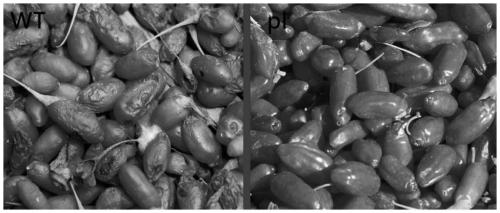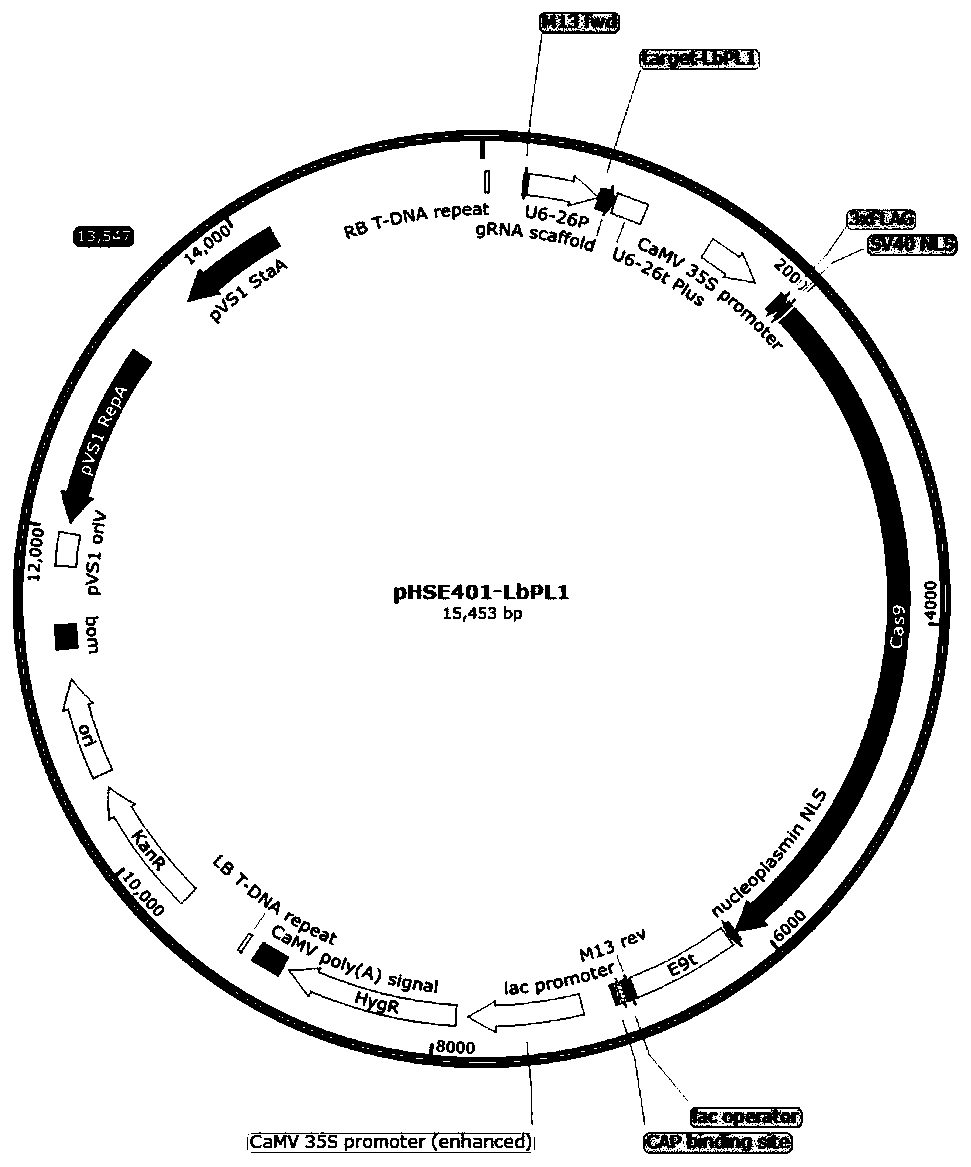Method for obtaining non-transgenic storage-resistant fresh-eating lycium barbarum
A storage-resistant, goji berry technology, applied to other methods of inserting foreign genetic materials, genetic engineering, plant genetic improvement, etc., can solve the problems of short fruit supply period and shelf life, high risk, and difficulties, and reduce the number of population samples , reduce safety risks, and shorten the breeding cycle
- Summary
- Abstract
- Description
- Claims
- Application Information
AI Technical Summary
Problems solved by technology
Method used
Image
Examples
Embodiment 1
[0059] Example 1, Cloning of Lycium barbarum LbPL gene and determination of target sequence
[0060] 1. Cloning of Lycium barbarum LbPL gene
[0061] The full-length cDNA of Lycium barbarum pectin lyase LbPL gene was amplified by RT-PCR using the cDNA obtained by reverse transcription of the total RNA of Lycium barbarum leaves as a template. Design of primers based on the conserved sequence of tomato PL gene in Solanaceae
[0062] F:ATGGG(G / C)CACTTCCTCTGTTTT
[0063] R:TT(T / C)AGCAACGAGAACCCTTTTAC
[0064]Amplify with primer combination F / R, RT-PCR result obtains the fragment of 1212bp through sequencing ( figure 2 ), which is a complete open reading frame, encoding 403 amino acids. Through Blast comparison, the gene represented by it was named LbPL according to the homology.
[0065] The genome DNA sequence of the LbPL gene is sequence 1, the cDNA sequence is sequence 2; the amino acid sequence of the protein LbPL encoded by the gene is sequence 3.
[0066] 2. Selection...
Embodiment 2
[0073] Embodiment 2, the knockout of LbPL gene
[0074] 1. Preparation of Cas9 protein and sgRNA transcribed in vitro
[0075] 1. Preparation of Cas9 protein
[0076] The purified Cas9 protein (amino acid sequence is sequence 11) was obtained from the Institute of Genetics and Developmental Biology, Chinese Academy of Sciences.
[0077] 2. In vitro transcription of target site sgRNA
[0078] The target sequence of sgRNA-1 is Target-LbPL1: 5'-GGGTATTTATCGTGTGGTACCGG-3' (SEQ ID NO: 7)
[0079] 1), construction of recombinant plasmid
[0080] Synthesize the following single-stranded primers with sticky ends (underlined parts): LbPL1F: 5'-ATTGGGGTATTTATCGTGTGGTAC-3'; LbPL1R: 5'-AAACGTACCACACGATAAATACCC-3', which form double-stranded DNA with sticky ends through the primer annealing procedure;
[0081] Then insert the double-stranded DNA with cohesive ends into the pHSE401 vector (recorded in the following literature: A CRISPR / Cas9toolkit for multiplex genome editing in plants....
PUM
 Login to View More
Login to View More Abstract
Description
Claims
Application Information
 Login to View More
Login to View More - R&D
- Intellectual Property
- Life Sciences
- Materials
- Tech Scout
- Unparalleled Data Quality
- Higher Quality Content
- 60% Fewer Hallucinations
Browse by: Latest US Patents, China's latest patents, Technical Efficacy Thesaurus, Application Domain, Technology Topic, Popular Technical Reports.
© 2025 PatSnap. All rights reserved.Legal|Privacy policy|Modern Slavery Act Transparency Statement|Sitemap|About US| Contact US: help@patsnap.com



